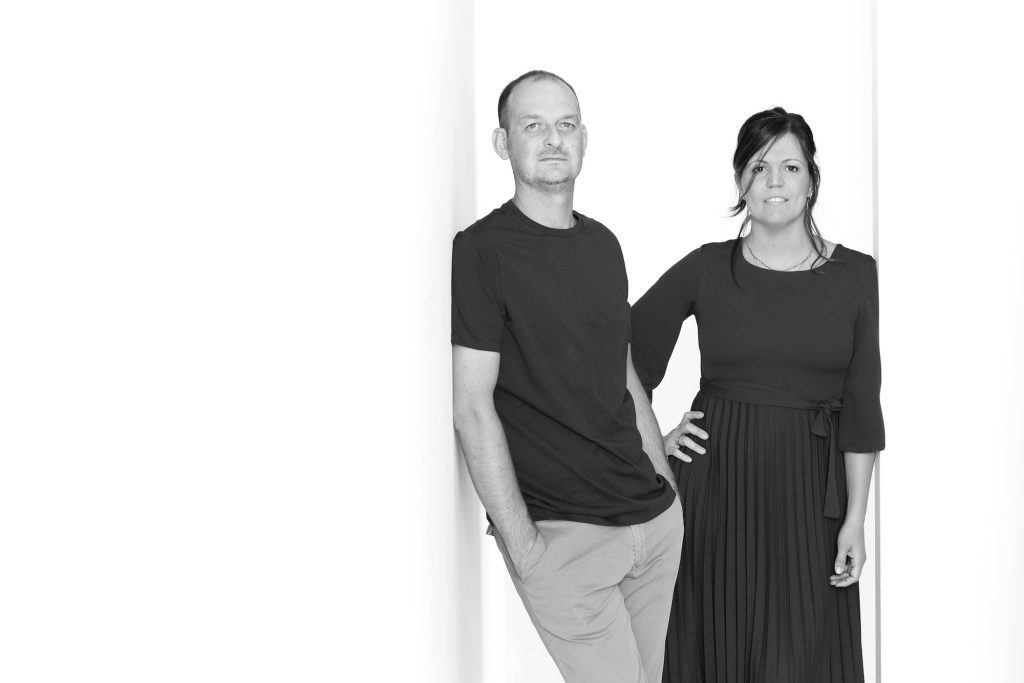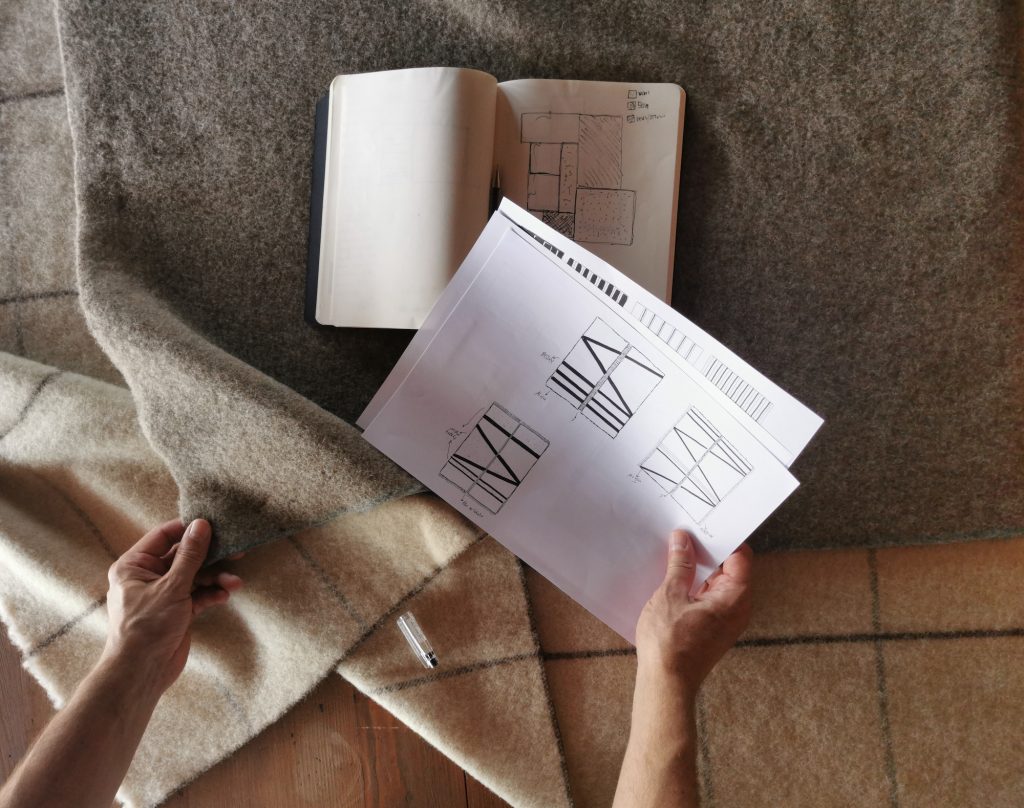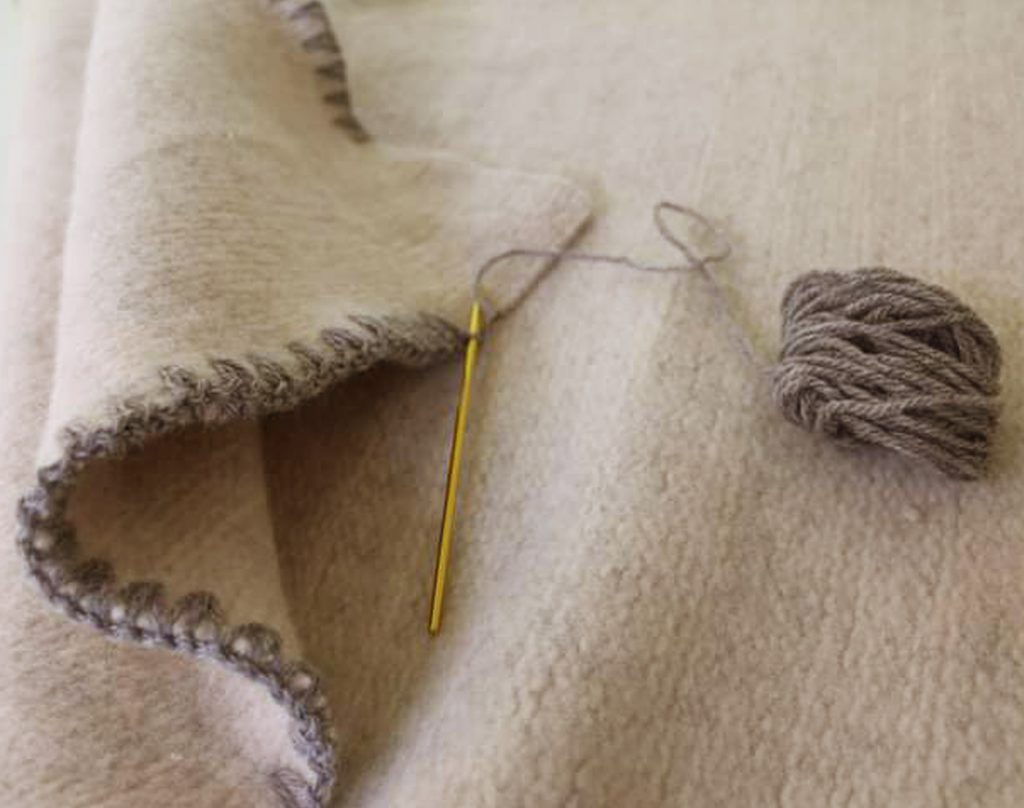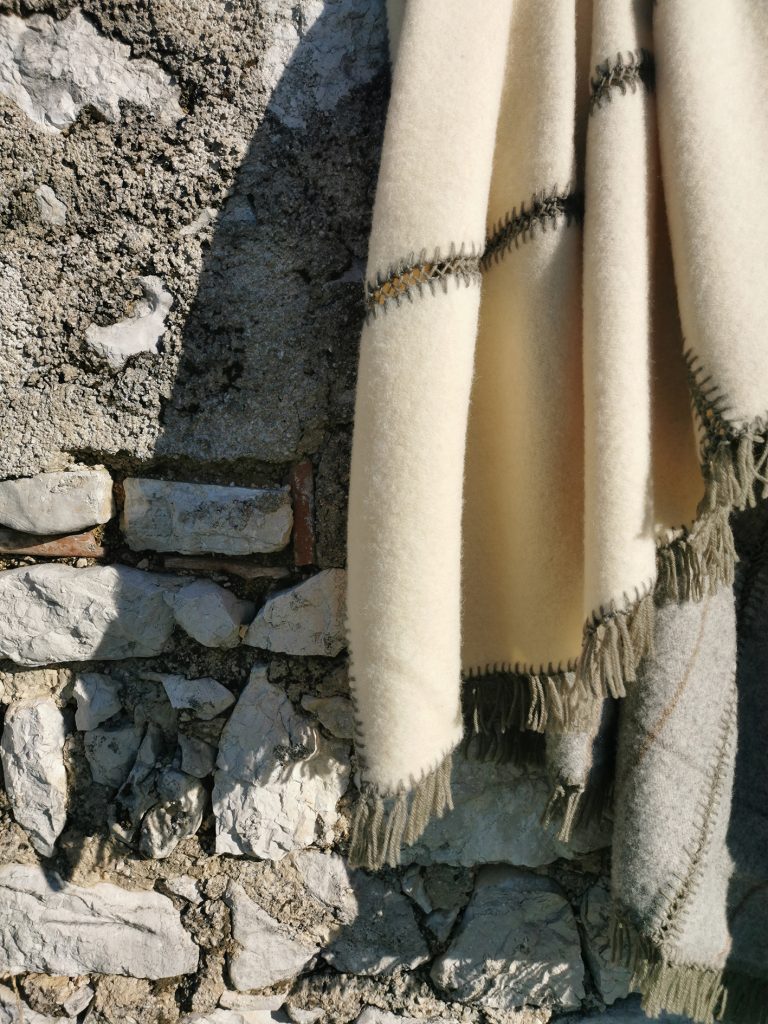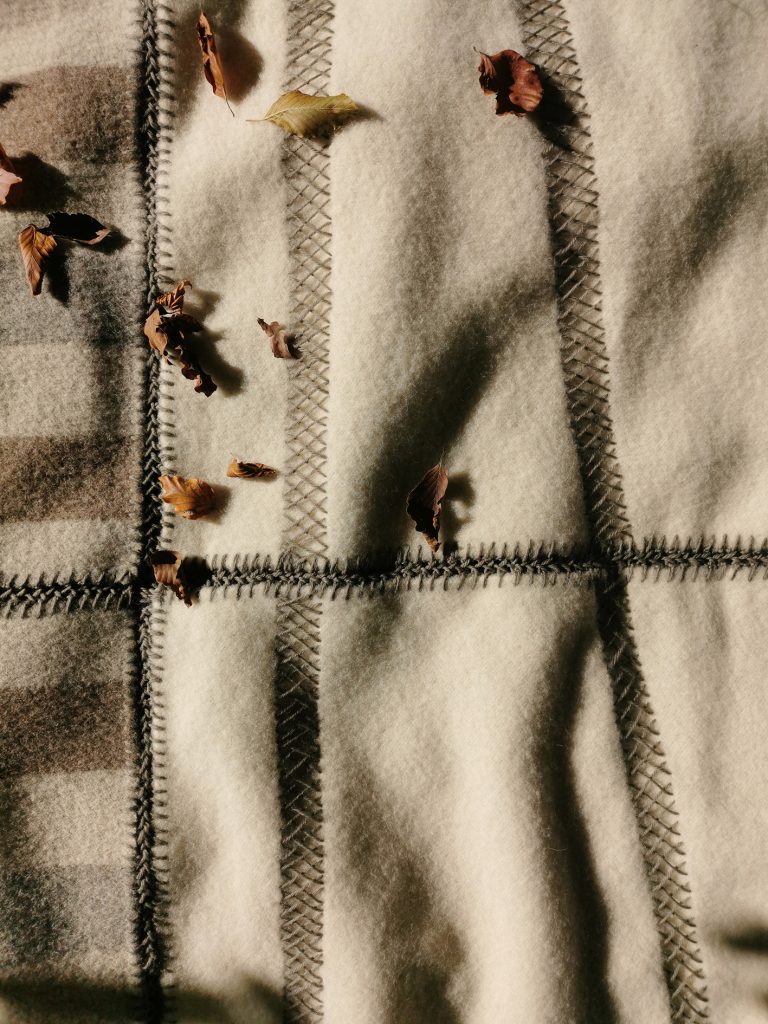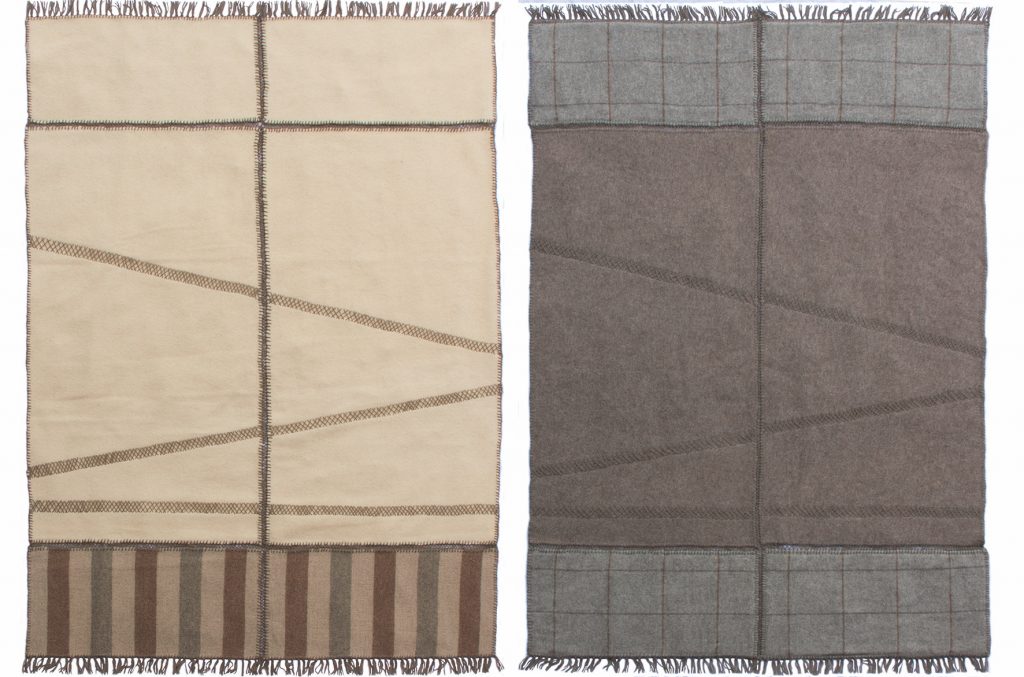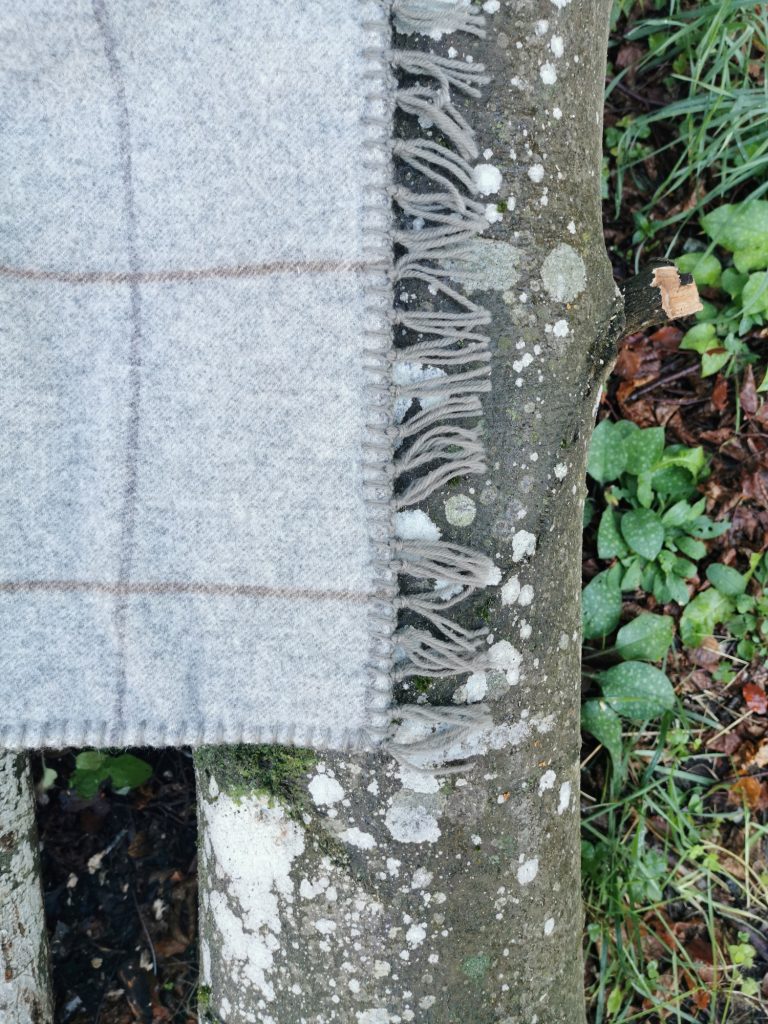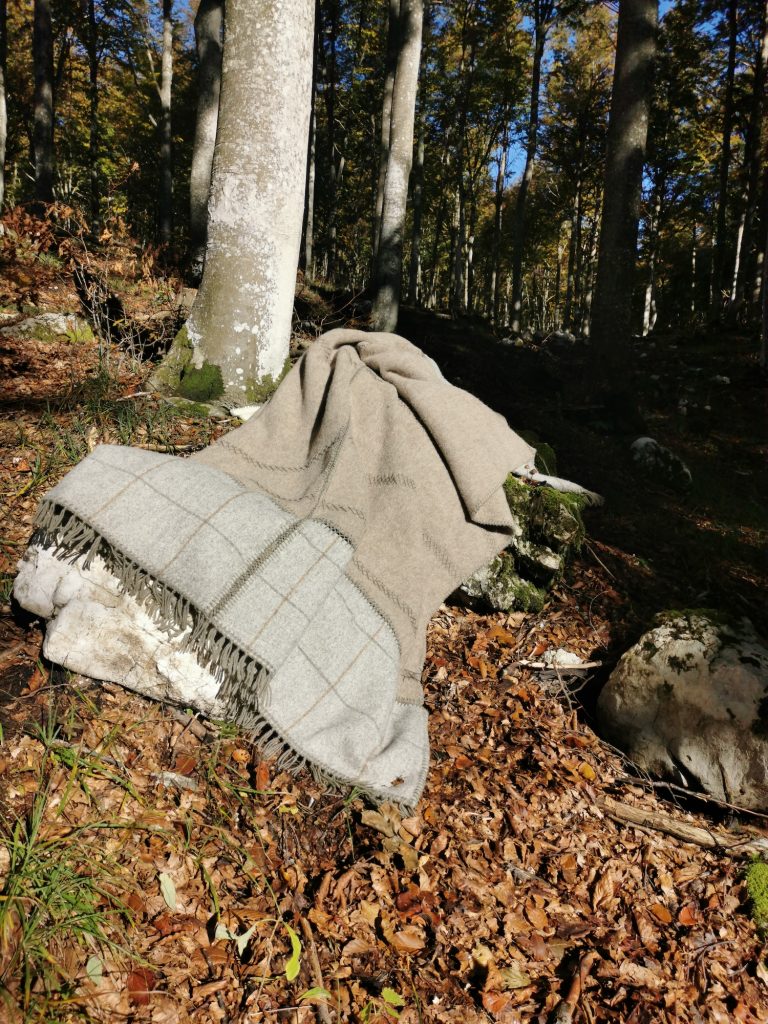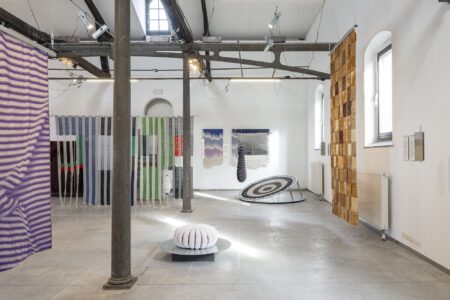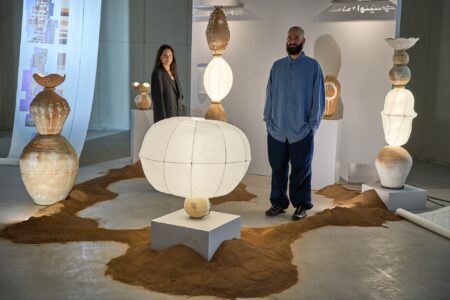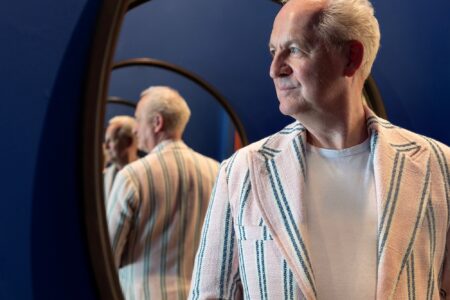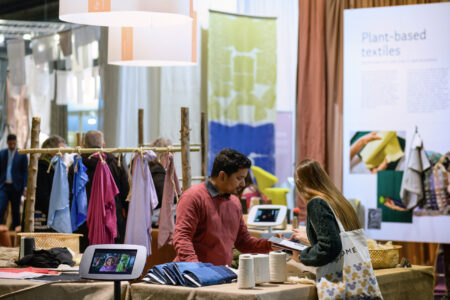Tracce: Tracing Italian Heritage Through its Wool
Researching the history of sheep farming and textiles near their home in northern Italy has led ruga.perissinotto to develop a beautiful collection of home interior products using local wool.
Alessandro Ruga and Carlotta Perissinotto are the founders of ruga.perissinotto, a design studio based in Roveredo, in the rural countryside of north-eastern Italy. The pair met while working for Poliform in London in 2010 and eventually moved back to Italy, establishing their design studio in an 18th century country home. Carlotta, is an architect and Alessandro a furniture designer, and for the last decade they have worked on projects including furniture collections, interiors, exhibition design, design strategy and creative direction.
In 2021, the couple began a new project in collaboration with Lanifico Paoletti, an historic textile mill in the region where they live, which has been around for over two-centuries. The mill has been helping restore the numbers of the indigenous alpago sheep which were on the verge of extinction, by recovering the wool that was being discarded and finding new uses for it mostly in fashion collections. Ruga.perissinotto proposed to design the first home interiors product with the mill, which developed into the Tracce collection of blankets that was recently presented at the 2022 edition of Edit Napoli.
“We are trying to give a new life to the material with interiors,” says Alessandro about Tracce, which means ‘traces’ in English, a reference to the heritage and historic material the couple discovered as they began researching the history of the sheep. The wool is naturally processed and free of dyes giving way to a soft, greyish, brown and cream-coloured blankets. The patterns on the blankets look somewhat like a map or drawing, with pieces sewn together, lines intersecting, and in fact, the linear designers were inspired from a very old story of the sheep and its milk production. In order to measure the quantity of milk, there was a system of carving Roman numbers onto sticks, known as tessera, which were then divided into two – one for the farmer and one for the accounting. The designs of Tracce designs reflect the visual traces of this unique accounting system.
“Tracce was originally meant to be a capsule collection,” notes Alessandro, but they were so inspired with the story of the wool and its potential as a material, that “they have decided to go deeper into the research of wool, pushing the idea further to collaborate with other nearby mills and focus on using 100% Italian materials.” They are working on expanding on the number of items with alpago wool as well as with wool from the local Lamon sheep, to include cushions, rugs and curtains and upholstery fabrics. “We are taking it on like a mission,” Alessandro says about this new project. “There were so many traces of this history to show,” he says, “and we want to continue this path from the past and bring it into the future.” The studio hopes to present some of the new collection in Milan this spring during Salone.
www.rugaperissinotto.it
@ruga.perisinotto
@lanificopaoletti
